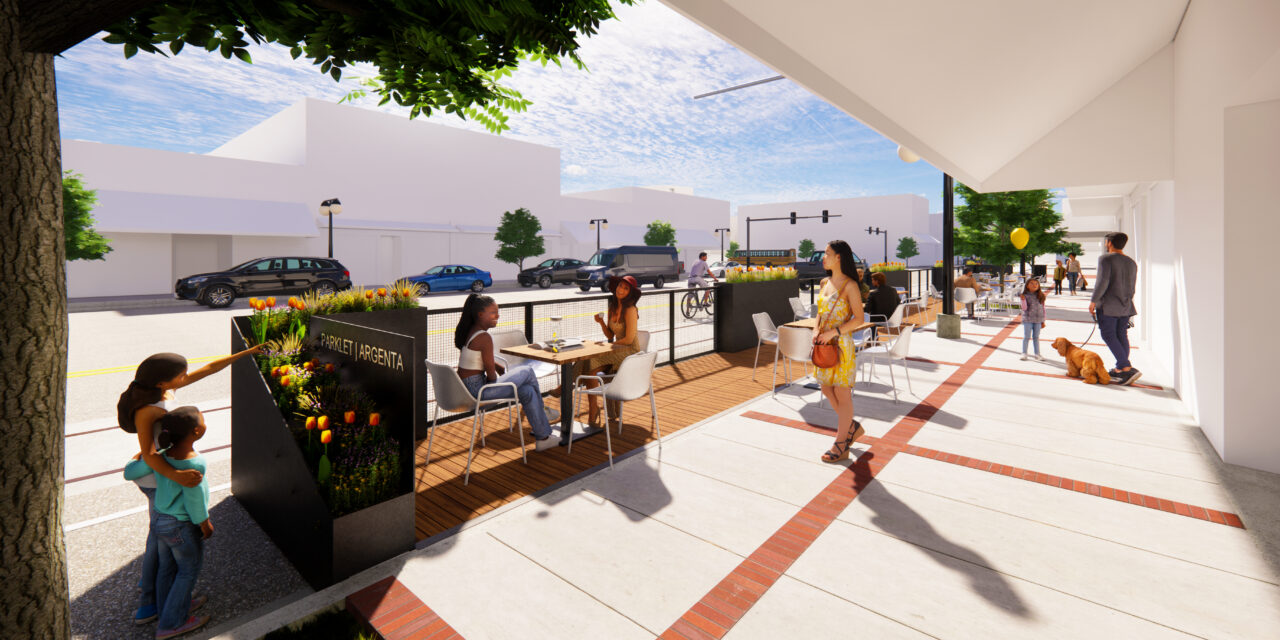What is a “parklet”? It’s a small public space created by reclaiming parallel parking spaces adjacent to sidewalks. Parklets are typically constructed as a raised platform or deck, set flush with the sidewalk curb and extending the width of the parking space, forming an extension of the sidewalk to serve as a pedestrian-friendly amenity space. The idea of the “parklet’’ stems from the broader concept of Tactical Urbanism, where scalable interventions in the built environment catalyze long-term change within local communities and cities and towns as a whole.
The parklet concept is highly flexible and has been applied around the world in forms ranging from very temporary “guerrilla style” parking space takeovers, to structures that are designed to remain in place for many years. The concept can be applied to a single parking space, extended for an entire block, or spread among multiple different locations around a city. While the parklet concept predates the COVID-19 pandemic, it has gained significant traction in recent years as a method for providing outdoor space where people feel safe gathering.
In the Argenta neighborhood of North Little Rock, two semi-permanent parklet structures are planned to be installed late this spring along the 300 and 500 blocks of Main Street. The Argenta Parklets, developed as a public/private partnership between Rock Region Metro, the city of North Little Rock, the Argenta Downtown Council and local businesses, will transform seven existing parallel parking spaces into 1,150 square feet of new public space in the heart of downtown for pedestrians to enjoy the vibrancy of street life activities and take in the atmosphere of the city.
While the Argenta Parklets project in and of itself is relatively modest in both scale and budget, it is expected to have a far-reaching impact. The newly created square footage will provide the obvious benefit of expanded seating areas for adjacent restaurants, increasing their capacity and, it’s hoped in turn, profitability. The parklets are designed with built-in planters that serve the dual purpose of beautifying the street edge and providing a sturdy barrier between users of the parklet and adjacent vehicular traffic. Additionally, the parklets will contribute to pedestrian safety through calming vehicular traffic along the Main Street corridor, as drivers are shown to inherently slow down when vertical elements and activity are placed along the street edge.
It is, however, the more intangible expected benefits of the parklets that all contributing partners are most excited about. Good urban spaces are known to have a sort of multiplier effect where supply creates demand. As William H. Whyte, the founder of Projects for Public Spaces, has said, “What attracts people most, it would appear, is other people.” Activating the street edge and offering true public space where people congregate and linger provides benefits not only to those people actively using the space, but also to the passersby who observe and enjoy them vicariously. By activating the street edge and engaging with the pedestrian public, the parklets are expected to create a spillover effect to the adjacent sidewalk and the surrounding built environment of the Argenta Arts District.
The long-term goal for the Argenta Parklets is to demonstrate the need for such urban amenity placemaking within the built infrastructure and create an expandable model that can be replicated in neighboring communities, cities and beyond.
Heather Davis and Kyle Heflin are architects with AMR Architects.



